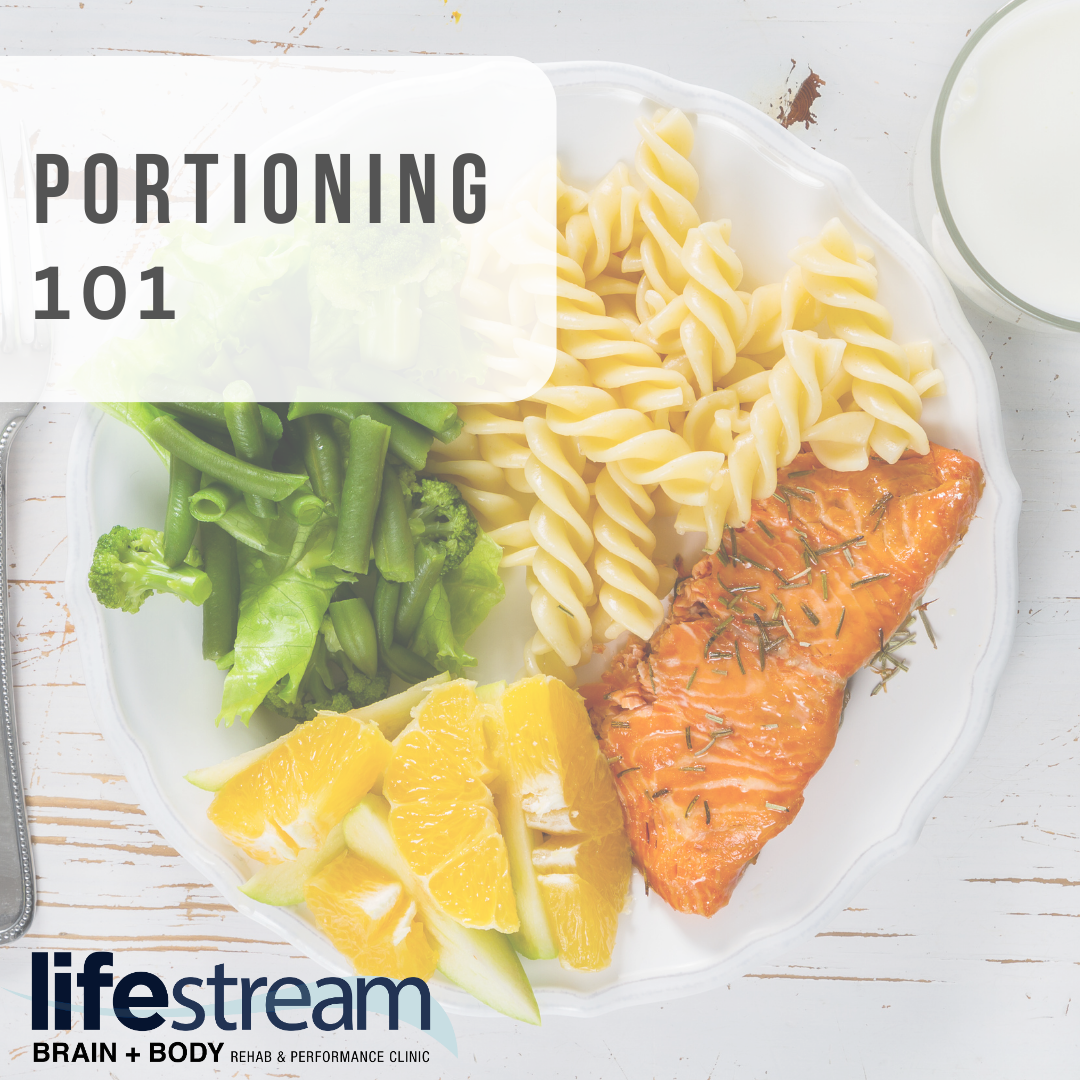Food Portioning
I have been told many times that one of the hardest things in regard to nutrition and eating a healthy diet is the portioning. The idea that the American public has about the amount of food that we should be eating has become based on the amount of food that is given at restaurants. However, the average food portions in American restaurants have doubled or even tripled in some cases over the last few decades. Furthermore, we read on the internet that you should be eating a certain amount of calories or a number of grams of carbohydrates or protein but we have no idea what that actually translates to for food.
Maybe a personal trainer or another health professional has told you how many calories you should be eating or has told you something like “you need to eat 100 grams of protein per day”. What does that actually mean though? How do you figure out how many calories and amounts of carbs, protein, and fat are in the food you are eating?
This blog post below is a great place to start to help you learn how to read a nutrition label so that you can understand what is in the food you’re eating:
https://lifestreamclinics.com/how-to-read-a-nutrition-label/
However, most of the time, people are not going to measure out their portions or weigh out other foods like chicken or fruit that don’t have a nutrition label on them. Additionally, most people are not trying to hit a perfect number of calories and are just looking to estimate the amount of food they’re eating so that they don’t overeat.
Here are some quick tips for estimating the nutrient content of common foods*:
– 1/2 cup of most carbohydrate sources (pasta, oatmeal, crackers, etc.) is roughly the size of a cupped handful or a tennis ball and contains roughly 15- 25 grams of carbs
– 1 cup of fresh fruit is roughly one serving and is the size of a baseball or a closed fist and has roughly 15 grams of carbs
– 1 teaspoon of oil or solid fat is the size of a postage stamp and is roughly 5 grams of fat
– 1 tablespoons is about the size of your thumb and is the approximate serving size of peanut butter (or other nut butters)
Sources:
https://www.nhlbi.nih.gov/health/educational/wecan/news-events/matte1.htm
https://www.ncbi.nlm.nih.gov/books/NBK56068/table/summarytables.t4/?report=objectonly
https://medlineplus.gov/ency/patientinstructions/000337.htm
https://www.cancer.org/cancer/risk-prevention/diet-physical-activity/eat-healthy/controlling-portion-sizes.html
https://diabetes.org/healthy-living/recipes-nutrition/eyeball-carbohydrate-servings
https://www.cdc.gov/diabetes/managing/eat-well/diabetes-and-carbohydrates.html#:~:text=For%20diabetes%20meal%20planning%2C%201,counts%20as%202%20carb%20servings.
https://www.cdc.gov/diabetes/managing/eat-well/diabetes-and-carbs/carbohydrate-choice-lists.html
https://www.eatright.org/health/wellness/nutrition-panels-and-food-labels/serving-size-vs-portion-size-is-there-a-difference
https://www.mayoclinic.org/healthy-lifestyle/weight-loss/multimedia/portion-control/sls-20076148

